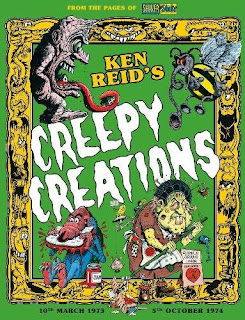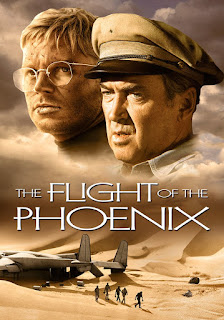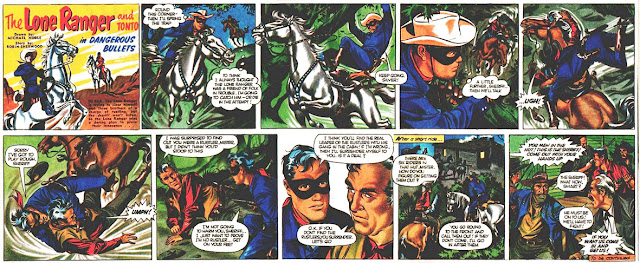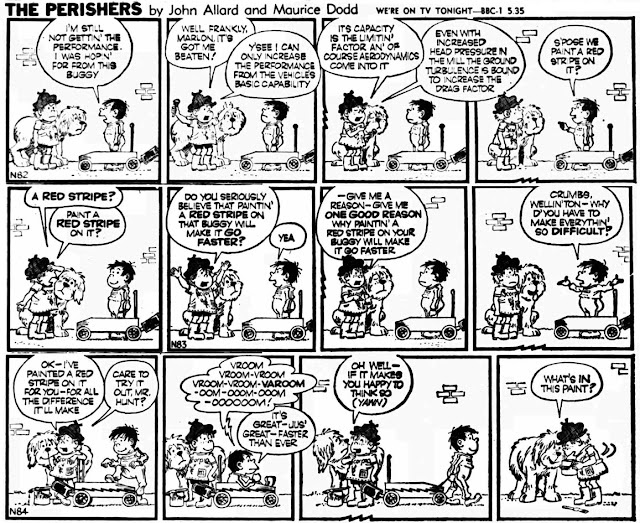The work is going to be intense and I'm also going to be working in-house, so for the next few months Bear Alley is going to have to take a back seat. I'll do what I can, when I can, and try to keep things rolling along smoothly – this site is, after all, the gateway to Bear Alley Books and I want people to keep buying my books!
My ability to answer correspondence is going to take a hit. If I don't respond straight away, don't panic. I will get to... whatever it is.
I had a meeting on Monday where the project was outlined in detail and we all shook hands. I had to hop on a bus to get home and was so engrossed in the book I was reading that I almost missed my stop. I bounced down the stairs at top speed to get off, but thankfully someone had been waiting to get on and I wasn't driven away.
I was quite fired up and sat down to finish off one of the two essays I'd started for the next Forgotten Authors book. There wasn't a great deal left to do, so I managed to finish it off that afternoon. One down, one to go.
 |
| Toshiba 3tb |
I have one of those heat packs that you can microwave, so I spent most of Tuesday with that wrapped around my knee. It worked... I could barely feel any problems on Wednesday, and by Thursday there were no twinges at all.
On Tuesday the two external hard drives I ordered arrived. One of my back-up drives stopped working a few weeks ago, but I managed to cobble together enough space on smaller drives that I had retired but which were still working. Because a lot of what I do involves high res images, I have always required a lot of external storage. I don't remember the size of the first external drive I had but I'm guessing 250mb. Back in around 1994, we used a 100mb zip drive to take digital copies of colour pages and covers for Comic World to a Repro company in Coggeshall that ran the pages out as film, which was then sent by Red Star up to the printers up in Yorkshire.
Happy days!
I've always tried to be sensible about doing back-ups for everything I do. I did have one disaster many years ago which cost me a lot of heartache. I'd digitally recorded all my old vinyl LPs and had them stored on a hard drive; I also had other work backed up onto that drive and a second hard drive. Being small, the two overlapped but also had files on them the other drive didn't have. Both drives failed within a week of each other. One was utterly dead... I lost the whole of my book about Sci-Fi Art, published back in 2009 – all the text, all the images, all my notes, unused scans... all gone.
Thankfully, we managed to recover everything on the second drive, although it was touch and go. So I got my music back.
 |
| Toshiba 5tb |
I'm retiring a 3tb drive, along with one of the 1tb drives that have been standing in for the past three weeks., although I will keep them all safely stored. (The other 1tb I'm using to back-up Mel's computer... just in case.)
Everything from the 3tb is being shunted over to two 5tb drives and the data from the 5tb is moving to a pair of 6tb drives. That's two sixes, two fives, a three and two ones. Roughly 25 terabytes of external storage (because a 6 is actually nearer 5½, and a 5 nearer 4½). That may sound like a vast amount of space, but you'd be surprised at how quickly it can be filled. I have 1½ terabytes of images from my days at Look and Learn still stored, 2tb of TV, radio and music that I've recorded, 1tb of back-ups from my computer dating back to 2013. Because I back everything up twice, that's 9tb used up already, and we haven't yet started on all the scans or comics and book covers and the accumulated junk that has been copied from one computer to another since I got my first PC back in 1989. That PC had a 30mb (megabyte, not gigabyte) hard drive and the guy selling it to me said "You'll never need to buy another computer with a hard-drive that size!"
I'm writing this on Thursday evening, with drives that have been working away in the background for over 48 hours now. I'm not even half way through juggling the data between them: I have one of the 6tb drives done; and one of the 5tb drives is getting close to being done. But I still have the other two drives to do.
The click and ticking has been the constant background noise to finishing off the other essay that I'd left half completed a while back when distractions got the better of me. The daft thing is that I was fairly close to finishing it and I had it all done and spell-checked by end of play Wednesday. That brings the current total for the fifth Forgotten Authors volume up to four finished essays of around 28,000 words. Still a long way to go and I'm unlikely to be able to work on any more for a while.
My TV watching this week has mostly involved old episodes of Columbo – I found a box set of season two and it has some classic episodes, one of them written by hard boiled novelist Jonathan Latimer (Solomon's Vineyard et al) and episodes starring Honor Blackman of The Avengers and Goldfinger, Anne Baxter, who was Eve in All About Eve and starred in the classic film noir The Blue Gardenia, and Leonard Nimoy of Mission: Impossible and this episode of Columbo fame.
Much as I love Columbo, better still was Counterpart, which has a science fiction premise at its centre but plays out like a spy thriller. Thirty years ago, our world diverged from a parallel world which continues to grow ever different from the point of divergence but which has somehow remained connected to our reality. A crossing point exists between the two worlds, which also shares information through an interface, run covertly by employees of the United Nations.
These differences are personified by Howard Silk (J. K. Simmons), a lowly interface operative, forever looked over for promotion, on one side meets his counterpart, a forceful, knowledgeable field agent who has travelled between the two realities. In operator Silk's reality, his wife (Olivia Williams) is in hospital following a hit and run accident, while agent Silk's wife is part of a group investigating a plan to replace people with their counterparts as part of a wider conspiracy.
I thought it was gripping. With something like this, there's the worry that you might become lost in the plot or find it hard to distinguish between the two worlds or two characters who are the same person. Believe me, you won't have any problems. The worlds and the characters have had thirty years to diverge and never the twain shall meet.
The show has an incredible central performance by J. K. Simmons playing two versions of the same character, a weak man who hardens as he discovers things about his family and the family he never had, and a hard man who softens as he realises what he has had and has lost. Sorry to be a bit airy fairy over this, but I don't want to spoil it for anyone who follows up my hearty recommendation to track this down and watch it.
I didn't realise that the show is a year old and that the second season is just about to start in the US in a matter of days.
You may notice that I'm rambling as this is possibly the last time I'll be able to do so for a while. I'm sat here listening to The Comedian's Comedian podcast interview with the Elves of QI's No Such Thing as a Fish, tidying up a handful of scans which will appear below. I find it incredibly relaxing, probably because it's something I can do relatively quickly. Most of what I've been doing for the past few years can take days if not weeks to research and write up; a cover scan on the other hand – as long as the book is not too beaten up – might take fifteen minutes to clean. I try to take out the bumps, creases and rusting, realign the artwork so it's straight and adjust the colour so that it looks fresh off the printing presses.
At the end of fifteen minutes, I've got something that looks 100% better than when I started, which is extremely satisfying. I've just tidied up six covers in an hour and pasted them up into pairs, so here they are... our random scans for the week, chosen because I had more than one scan and it seemed like a good chance to pick the best and dump the others before I do another back-up. Enjoy...






























































































